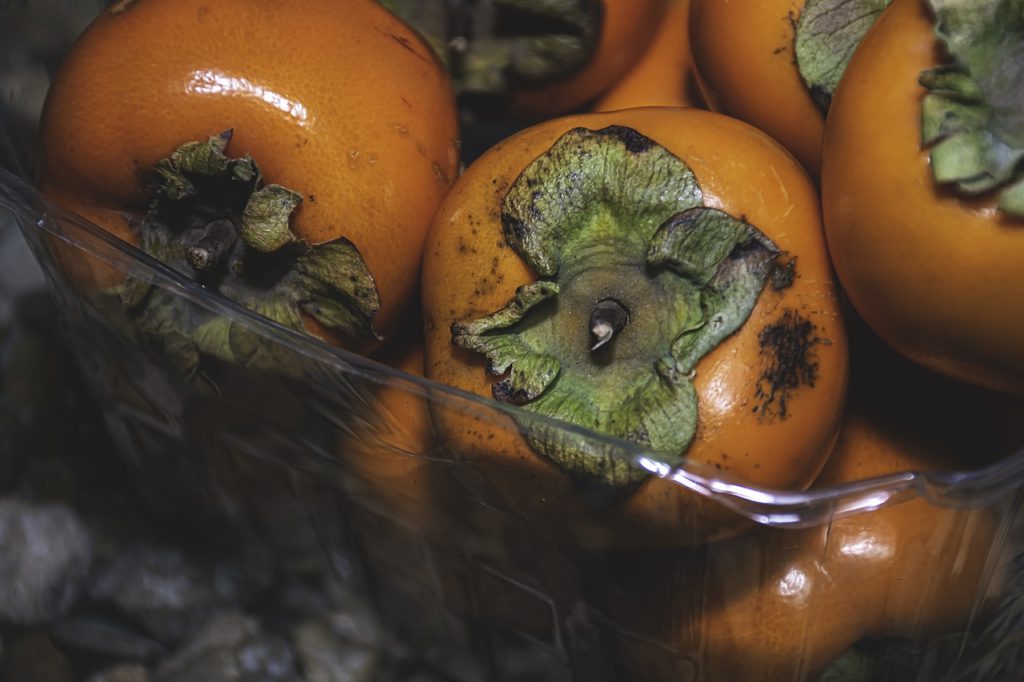
A more systemic approach to investing is influencing the flow of money away from old ways of financial thinking towards new solutions that push living assets to the fore.

The growing importance of “non-financial factors”, environmental, social and governance considerations, in determining the flow of funds from a rapidly expanding pool of investors and banks is helping to turn the financial tide towards more innovative packaging solutions nested in nature.
Getting the packaging industry fit for the future and focused on people, planet and profit, has become a priority for a new breed of investors, echoing customer sentiment that businesses need to not only be profitable they also need to benefit society and the environment.
According to Bloomberg, ESG assets under management could climb to more than $53 trillion, more than a third of the projected $140.5 trillion global total by 2025.
While more than half of this investment currently takes place in Europe, the United States is catching up fast with US-domiciled assets under management using sustainable investing strategies growing from $12 trillion at the start of 2018 to $17.1 trillion at the start of 2020, an increase of 42%.
For systems thinkers like Joseph Bragdon, general partner of investment manager, Conservest Management Co and the author of Profit for Life, Companies That Mimic Life and Countries that Mimic Life, it’s a vindication of their beliefs that profit cannot be separated from the “living assets”.
“In the emergent new thinking, companies are living systems communities of people operating within the larger living systems of society and Nature. This is a radically different view from the traditional one of the company as a money-making machine. Implicit in this worldview, living assets (people and nature) are more important than non-living (capital) assets because they both define and impel the system, because profit can only arise from life, profit must ultimately serve life,” says Bragdon.
Plastics a Place Between Risk and Opportunities
Bringing the plastic packaging industry into line with this new approach to investing presents enormous risks and equally sized opportunities.
Sitting at the convergence of two of the highest profile themes for ESG investors: waste and climate change, plastic producers and their main customers, the world’s largest consumer goods companies have come under a particularly intense spotlight as a consequence of the global shift towards a more systemic approach to investing.
The take-make-dispose model that has dominated this industry comes with a cost attached and it is estimated that the total natural capital cost of plastic used in the consumer goods industry is estimated to be more than $75 billion per year. The cost comes from a range of environmental impacts including those on oceans and the loss of valuable resources when plastic waste is sent to landfill rather than being recycled as well as the upstream impact of greenhouse gas emissions released from producing plastic feedstock, responsible for almost a third of the total natural capital costs.
In 2019, the production, management and incineration of fossil-based plastics added 860 million tonnes of CO2 to the atmosphere – equivalent to the emissions from 200 coal-fired power stations. By 2050 the carbon footprint of plastics is expected to triple in size. All this carries significant challenges and risks for investors to consider when assessing companies in the industry.
It’s little wonder that some private equity investors have cooled on plastics packaging companies, fearful of levies being raised on virgin plastic stocks and possible bans on single-use plastics.
“No plastic packaging firm would pass our internal ESG check and we would pass even if such an investment would promise a large return,” Co-head of EQT’s private equity advisory team, Marcus Brennecke, told Reuters. “While we have invested in plastic packaging in the past – we owned Faerch Plast from 2014 to 2017 – we would not buy a plastic packaging firm today.”
And yet a plastic packaging market worth $265 billion in global sales last year, according to figures from Market Data Forecast, remains attractive to investors who see value in packaging companies that can bridge the divide of solid growth prospects and the need to find sustainable solutions.
“We still consider the packaging sector to be highly attractive,” Thomas Unger, managing partner at Lindsay Goldberg Europe, told Reuters.
“Companies that score points with material efficiency, closed material cycles and the most positive ecological footprint possible will win,” he added. “Companies that fail in this challenge will lose drastically in their value.”
Investments are being made, often with stipulations built into acquisitions to accelerate the shift towards the use of more recycled materials – an important condition to enable the world’s largest consumer goods companies to comply with their commitments under the Plastic Pacts coming into effect in the next four years.
Ontario Teachers’ Pension Plan Board, bought a majority stake in Portuguese packaging maker Logoplaste in February 2021, in a €1.4 billion acquisition, with plans to make all the firm’s packaging reusable or recyclable by 2025 and to increase the recycled content in its products.
Companies with clear goals on the path towards increased use of recycled materials and support for the UN sustainable development goals have also been able to access preferable finance terms from lenders tapping into the sharp increase in investor demand for sustainable bonds.
The sustainable debt market (green, social and sustainability bonds) reached a cumulative $1.7 trillion at the end of 2020, a milestone reached with $700 billion of new debt issued in 2020, more than twice the previous year.
These mechanisms are being tapped by private equity investment vehicles established by leading figures in the industry to stimulate innovation and accelerate the transition to a more circular future.
To power investments in new technologies in the circular economy, the world’s largest consumer goods companies – Coca-Cola, Amazon, Danone, 3M, PepsiCo – came together in 2014, to invest in Circulate Capital and followed up more recently with investments in a fund managed by Closed Loop Partners, a New York-based investment firm comprised of venture capital, growth equity, private equity, project finance and an innovation center that is focused on building the circular economy and powering the transformation of their industry.
Closed Loop Partners now has 45 portfolio companies working in areas such as the recycling, reuse and reduction of plastic.
And other financial powerhouses have added their financial muscle to the search for solutions.
The Plastic Solutions Investors Alliance has concentrated its engagement on leading consumer goods companies and has 40 investors as signatories including Aviva, Axa and Hermes. Besides that, 26 financial institutions with $4.2 trillion of assets under management have so far endorsed the EMF’s New Plastics Economy initiative
with the likes of Morgan Stanley committing to use its capital market leverage to prevent, reduce, and remove 50 million metric tons of plastic waste from the environment by 2030.
Innovation within the industry has even resulted in the creation of the first index tracking the reduction in plastic production the Solactive ISS ESG Beyond Plastic Waste Index which tracks companies providing solutions in the reduction, reuse and recycling of plastic.
Companies listed on the index include PET recycling and upcycling specialists, Loop Industries and carpet manufacturer Interface as well as a host of circular waste management experts.
Recycling & Circular Financial Flows
One of the core areas where finance is flowing is the area of recycling.
Alliance to End Plastic Waste (AEPW), consisting of more than 45 major global companies, has earmarked over $1 billion with the goal of investing $1.5 billion by 2024 on solutions to prevent leakage as well as recover and create value from plastic waste.
But more money needs to be channeled towards this. The US recycling system is performing poorly, capturing just 32% of recyclable materials available for processing from US homes and it is estimated that the recycling system needs $12 billion in new investment to perform properly and only about $870 million—about 7%—appears to have been invested to date.
Producers are being urged to step up and it is estimated that they should be investing up to 1% of their annual revenue toward capturing the products they put on the market to stem the flow of plastic waste. Only four companies—Nestlé Waters NA, Campbell Soup Company, Colgate-Palmolive Company, and Target Corporation—disclosed a percentage of annual revenue contributed toward recycling infrastructure, and none were close to 1%.
Introducing circular economy principles is good for business, says Ron Gonen, Founder and CEO of Closed Loop Partners.
“You are eliminating waste out of supply chain systems. Waste is synonymous with costs and so if you can eliminate that waste you are going to reduce your cost and that is what the circular economy is all about,” he says.
Good management of plastic, through recycling is estimated to save consumer goods companies $4 billion per year. Over a quarter of these savings were generated through initiatives in the food sector and 17% in the soft drinks sector.
In Europe it is estimated that waste prevention and reuse, with better eco-design, could bring net savings to businesses of up to €600 billion and boost gross domestic product (GDP) by 1%.
Circularity in itself is not the only solution. Reducing costs by reducing waste is one of the biggest challenges and opportunities facing the industry and PET producers that can adapt to the new needs of the industry, in particular will be well positioned to benefit from the changes taking place.
However, there are more fundamental financial shifts taking place than simply the shift to back initiatives that embrace more recycling and a more circular economy.
Beyond savings to the bottom line, the exercise by companies of paying more attention to the living assets on their balance sheets, building closer, more loyal relationships with their employees and their customers is likely to result in much better relations with investors, according to studies by Bragdon.
The Global Living Asset Management Performance (LAMP) Index – a learning laboratory of sixty corporate pioneers in living asset stewardship – highlights how companies that were pioneers in a management genre that mimicked the organization and behavior of living systems, outperformed the FTSE-100 and S&P 100 by a factor of 74% and 56% respectively between 1994 and 2019.
Management teams that mimic the behavior of living systems are far more likely to succeed in transitioning to a circular economy and reaching investors guided increasingly by environmental, social and governance investment criteria because they have the following attributes and collective purpose.
Attributes
- Decentralized/networked organization,
- Self-making, self-renewing culture
- Open, interactive conduct
- Frugal by nature
- Symbiotic instincts/strategies
- Consciousness
Function / Purpose
- Central nerve system
- Autonomic system
- Learning/adaptation
- Survival
- Future wellbeing
- Awareness, creativity
“Companies that mimic life see the connections between LAS and stakeholder loyalty. When employees are inspired they give better service to customers. When customers feel well served, they come back for more and generate referrals. Customer loyalty, in turn, begets investor loyalty as repeat business generates a growing stream of profit,” says Bragdon.
“When loyalty cascades down through a business ecosystem it creates a web of durable relationships. The strength of these relationships which we refer to as ‘relational equity’ is a reliable indicator of future financial equity.”
Share it
Useful Links
THE HISTORY OF PLASTIC
Throughout the history of plastic, PET has been crucial in keeping food fresh with lightweight and durable packaging solutions that have helped reduce food waste for almost a century. Learn all about the invention of plastic and the important role it has played feeding people and saving the lives of humans and elephants in the adaPETation® timeline of the history of plastic.





